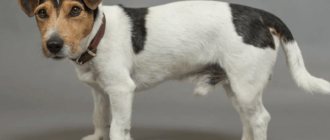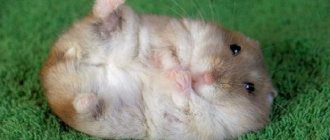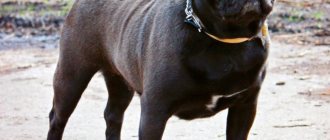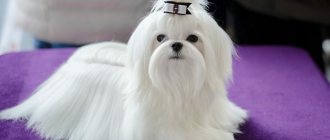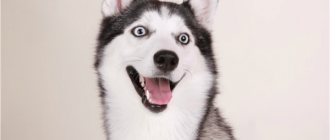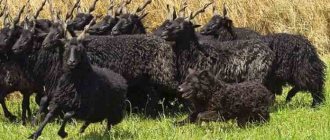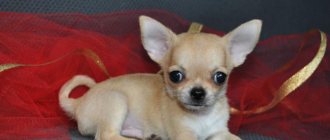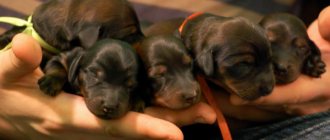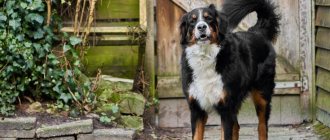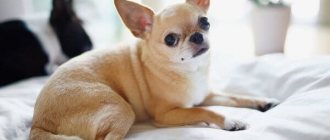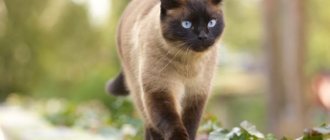History of the breed (Origin)
The breed has a long and very difficult history. Shih Tzus originate from Tibet, but the formation and development of the breed took place in China, where Shih Tzus lived in imperial palaces. According to legends, the Shih Tzu accompanied the Buddha on his travels, sometimes turning into a lion so that the Buddha could rest while traveling on the back of a powerful beast. The first name of the breed is lion dog, and in Chinese “Shih Tzu” means “lion”.
According to one version, the ancestors of the breed were the Lhasa Apso and Pekingese; according to another, the Shih Tzu originated from Tibetan terriers. Shih Tzu came to Europe in the 30s of the 20th century and quickly gained popularity. The first club of breed lovers was created in 1933, and the first standard was approved in 1948.
Regarding breed standards
Overall, this is a miniature, lively and energetic dog breed. Its muzzle is short and looks like a chrysanthemum flower; on its nose, the hair grows upward and in all directions, which is why the shi dog received its second name “chrysanthemum”. The height standard should be from twenty to twenty-eight centimeters.
Weight varies from four to seven and a half kilograms. Of course, females have lower indicators than males. The coat is usually long and thick. The color of the coat can be different: white, brown, chocolate, black, red. Since the coat is thick, it requires careful grooming. And, as an adult, her fur can cause a lot of trouble; owners should be prepared for this from the beginning. Ears are set wide and hang down. The tail is carried over the back, set high. Dogs must move beautifully and gracefully, in accordance with the breed standard. They are very ambitious and compact. Especially dwarf breeds - up to 4.5 kilograms.
The Shih Tzu dog breed has majestic features, aristocracy and mannerisms, and independence. But despite this, Shih Tzu puppies become very attached to people from a young age. They are very loving, but silent and rarely bark. They adore small children and take them “as their own.” If the owner leaves, the dog may quietly howl and whine, it is so difficult for her to experience this fact - loneliness. Shih Tzus also get along well with other animals. Shih Tzu puppies, while still very young, can already experience friendship for each other. They are cheerful and playful, peaceful. They are similar in character to a terrier. Therefore, almost everyone loves shi dogs: both adults and children. Of course, as a terrier, they will not be able to fulfill the roles of a guard and a hunter, because they are so cheerful and sociable. Although with strangers they can show coldness and mistrust.
Shih Tzu character
Shih Tzus are absolute extroverts - cheerful, mischievous, loving and trusting.
They are sweet, gentle lap dogs and great companions.
Little optimists love to play and lie around. They are attached to the family and get along well with children, who treat them with care.
Due to their lively temperament, they are good companions not only for people, but also for other animals. Shih Tzus tend to get along with everyone.
Since Shih Tzus are dogs with dignity, they can sometimes seem proud.
Shih Tzus need a lot of attention and love to be the center of it. These dogs can sit on your arms for hours, bask and cuddle. People who spend little time at home and cannot pay the proper amount of attention to their pet should not get such a dog.
Shih Tzu care and training
Much of the Shih Tzu's charm comes from its gorgeous coat. You need to take care of this magnificence every day. If the dog is accustomed to daily grooming, then the usual 15 minutes a day of grooming should not be a big problem for the owner.
Constant brushing will prevent the coat from becoming tangled. Shih Tzus are usually bathed once a week. You can use hairpins, bows and elastic bands to remove hair from your Shih Tzu's eyes and face.
Some owners prefer to cut their dogs' hair to make grooming easier. It is necessary to trim your Shih Tzu's nails and ears regularly. Shih Tzu eyes are very sensitive, it is important to keep them clean at all times.
Shih Tzus, like other lap dogs, do not need much physical exercise. Short walks outside keep your Shih Tzu in good physical shape. Shih Tzus love to play, so the required activity can be satisfied through games.
Shih Tzus are not supposed to demonstrate working qualities, but they are simply required to know the rules of good manners in the dog world. Even a small dog, without training, can become a source of chaos and unnecessary noise. And for dogs destined for a show career, the ability to behave correctly in the ring is extremely important. The basic rules in training these smart dogs are training in the form of a game, dosing the load (so that the puppy does not get tired) and using rewards as the main method of education.
Appearance
A luxuriously groomed dog with a funny face. The breed description specifies that Shih Tzus should not be fur-bearing and should not resemble Apso. To a beginner, these two breeds may seem similar, but they have different origins, and the differences in appearance are obvious.
The breed characteristics describe the Shih Tzu as a cheerful and friendly companion. Four-legged animals are always cheerful and active, and are arrogant and proud with strangers. When evaluating dogs at breed shows, the physique, breed traits, color and, last but not least, the size of the Shih Tzu are assessed.
The established standards are quite vague, which gives breeders an additional opportunity not to sacrifice the exterior for the sake of size:
- Height up to 27 cm.
- The weight of an adult dog ranges from 4.5–8.1 kg.
Note! Weight up to 7.5 kg is preferred (over 15 months of age).
Breed standard
- The head is voluminous, quite large, but not too heavy. In males and females, the size and roughness of head carriage differ; when comparing two dogs of different sexes, this feature should be taken into account. The forehead line is not too wide, with smooth, rounded edges. The cheekbones and chewing muscles are developed, but should not stand out in the silhouette of the muzzle (the muscles are flat). The transition from forehead to muzzle is pronounced and sharp. Pinned bangs should emphasize the transition, but not aggravate it. When viewed from the front, the top of the nose should be in line with the lower eyelids. The front part is rectangular, without folds.
- The teeth are small, densely and evenly set. The bite is straight or moderately overshot.
- The nose is of proportional size and has wide nostrils (narrowed nostrils are a disadvantage). The bridge of the nose is free from folds, and the dog's breathing is deep and even even in a stressful situation. Dogs have a brown or brown-spotted color and a dark brown (liver) nose. Shih Tzus are gray and blue in color; the nose can be deep gray, although such pigmentation is not recommended. For other colors, only a black nose is acceptable. Pink spots or clearly lightened pigmentation are a fault.
- The eyes are expressive, round in shape, not protruding. The color of the irises is dark brown, although light pigmentation is acceptable in brown, gray and blue dogs. The eyelids are tight-fitting, colored to match the nose.
- The ears are large, set below the top of the head, but above the eyes, decorated with abundant and long hair. The outdated standard allowed low set ears (at the level of the corners of the eyes).
- The body is elongated, that is, the height at the withers is less than the length of the back from the withers to the base of the tail. The neck is of medium length with an expressive arch. The withers are moderately pronounced, the back is straight (not sagging), the chest is proportionally wide, falling slightly below the elbows.
- The limbs are strong, moderately wide, rounded in cross-section. The shoulders are inclined towards the body, the forearms and pasterns are as vertical as possible. Hind legs with balanced angulations, thighs well rounded and muscular. The hands are well selected, abundantly covered, the fingers are compressed, the pads are convex and strong, the claws are arched.
- The tail is of natural length, carried over the back. Due to the set and abundant hair, the tip of the tail is in line with the crown, which gives the dog a more balanced appearance.
Possible diseases
The breed has good health, strong immunity and a long life expectancy. Sometimes 15 years is not an age for a Shih Tzu. These small dogs can handle the heat well, and in winter they don’t need to be dressed in overalls to go for a walk. The general recommendations are simple: if you notice that your dog is not acting as usual, contact your veterinarian. Supervise your Shih Tzu when they drink water. Due to the position of their nose, water can block their breathing.
Shih Tzu dogs are predisposed to the following diseases:
- Cataract
- Atopy
- Urolithiasis disease
- Ulceration of the cornea of the eye
- Intervertebral disc disease
- Tracheal collapse
- Kidney disease (underdevelopment of the kidney)
- Chronic heart valve disease
- Ventricular septal defect
- Perianal gland adenoma
- Entropion (inversion of the eyelid)
- Distichiasis (extra eyelashes).
Feeding correctly
Many dog owners like to feed them dry food, this is decided individually by each owner, the main thing is that the food is varied, healthy and balanced.
Dry food must be of high quality and premium. Don't forget that your dog loves to drink, change his water more often. You need to find out what to feed your dog in advance. This breed of dog needs special nutrition and this issue requires attention because the Shih Tzu can have many stomach and intestinal problems. This is their weak point; Shih Tzu puppies need to be especially monitored.
If the food is natural, there should be no meat on the menu, that’s the peculiarity. But only liquid food, soups and porridge. It is better to consult a veterinarian about the nutrition of this breed of dog, this is their weak spot.
What to feed your Shih Tzu?
These small dogs are not picky when it comes to nutrition; the general recommendations for feeding dogs will suit you. The main thing is to remember that your dog is small and not to overfeed the dog to prevent obesity.
A dog's good appearance is directly related to how it feels. This means that for the beauty of the coat, it is imperative to provide the dog with proper nutrition. The saying “We are what we eat” can be applied to dogs, as well as to people. That is why it is very important to ensure that your four-legged friend’s food is balanced.
It doesn’t matter what type of food you choose: prepare the treat yourself or buy commercially produced food, the main thing is that the food contains all the microelements and vitamins necessary for the dog’s health. As for beautiful fur, skin and claws, they need: calcium, phosphorus, zinc, cereal B vitamins (Bi, Bis, Br, B and others), vitamins A, D, E and, of course, biotin. Biotin is included in the list of required elements for dogs participating in exhibitions, nursing mothers and all long-haired breeds without exception. All dogs also need biotin during shedding. Bioadditives from natural algae provide wool with bright color and shine. Today, most manufacturers use such additives in their products.
We advise you to read: Akita Inu Dog Breed
Saving when preparing a healthy diet for a dog is not appropriate. The fact is that obtaining dietary supplements requires considerable funds, which naturally affect the final price of the product. This is why very cheap food is not the best option for your pet. It may not be hazardous to health, but it will certainly not be useful at all.
Choosing a puppy
It is better to buy and acquire a dog of this breed in good clubs and nurseries, where there is a proven mating and pedigree. The puppy must be healthy and meet the standards. Buying such dogs secondhand is a very risky business; it is unknown with whom the mating occurred. And specialized nurseries are responsible for the quality of breeding of such breeds: they can breed them correctly, and will also give a lot of advice and recommendations on maintenance and care. It is also important that your pet has all the necessary documents and information.
Pay attention to how a healthy pet behaves. He is cheerful, playful, with a strong build and beautiful coat. Mating should only occur with purebred dogs. It is important to look at the dog’s parents live and evaluate their appearance, especially the dog’s mother.
The minimum age to get such a puppy is approximately forty-five days. It's not worth it before. The average cost of puppies is about four hundred to five hundred dollars. Provided that the dog has a passport and documents that can confirm its breed.
If you want to buy a dog without a pedigree, it can cost you much less, about half the price. Such dogs are divided into classes. A special class for exhibitions and competitions is the show class. The most expensive in terms of price. Caring for them is also more expensive and thorough. It is required to conduct certain classes, which also cost a lot. Bridge class - for breeding pets; such dogs can also participate in exhibitions and shows. And the simplest class is just for fun, they don’t participate in exhibitions, so their price is one hundred to two hundred dollars. What exactly you want from an animal is up to you. But, despite how much a pet costs, it needs care, nutrition, your love and care.
Don't forget to prepare in advance for your pet's arrival. Prepare a place for her, a tray, a place to sleep, eat and rest. Other accessories necessary for growth and development.
Shih Tzu - pros and cons
Affectionate, affectionate, friendly and active dogs with spectacular appearance, wonderful companions - the list of advantages of the Shih Tzu is impressive. If daily walks aren't your thing, Shih Tzus are easy to train to use a litter box. However, keep in mind that a dog's magnificent coat will only be achieved with careful regular grooming. Shih Tzus also do not tolerate lack of attention. Consider whether you will have enough time to communicate with your pet, to do grooming, wrap the fur in curlers if necessary, comb the Shih Tzu's fur and carefully remove tangles.
Caring for a Shih Tzu requires time and effort, but the result is worth it - the luxurious flowing coat, secured with a beautiful topknot hairpin (“tuft”) on the head, the proud posture and smooth movements of your pet, as if dressed in a royal robe, will attract your attention. The fur of the Shih Tzu breed, which came to us from China, is the main asset of these dogs. It flows and shimmers in the light, and is soft and delicate to the touch, like high-quality Chinese silk. Of course, such royal wealth requires royal care.
Conditions for keeping a dog
The Shih Tzu dog is used to living with a person; it is an indoor companion animal, which under no circumstances should be kept outside or in a kennel. The presence of this breed can only be enjoyed in an apartment or inside a house.
Care
One of the main features of the breed is its long and beautiful coat, which of course requires care. When choosing such a dog, you should consider how much time you are willing to devote to caring for your Shih Tzu. After all, you will need to brush your pet at least once a day. This, of course, takes time, but it’s not at all difficult and, moreover, very interesting: after all, you can do a small dog’s hair by removing the hair from its face with hairpins, elastic bands and bows.
For those who don't want to bother with hair, you can offer dog grooming. With a haircut, the dog takes on a very funny puppy look. You can also dress her up: special clothes for Shih Tzu are sold for this purpose.
From this video you can learn how to cut a dog's hair at home (video author: UCI Dog and Cat Club).
In addition to combing, coat care also includes mandatory bathing. And if other breeds usually bathe no more than once a month, then due to the characteristics of its coat, with this breed it’s just the opposite. So how many times does this little dog get bathed? At least once every two weeks for dogs with long hair and at least once a month for short-haired pets.
It is necessary to trim your pet's claws and take care of his ears. The eyes of this breed are very sensitive in nature, so any discharge from them must be removed.
Like any mini indoor dog, this breed does not require long walks. Her need for physical activity can be satisfied with games at home. As reviews about the breed note, you can come up with as much entertainment as you like. But the owner can determine for himself how many times to walk the dog, because this breed can be trained to go “on errands” in the cat’s litter box.
Loading …
Ideal diet
Any dog, even one of such small height and weight, is a carnivorous creature. Therefore, the basis of his diet should be meat, but it must be supplemented with fiber, cereals, vitamins and minerals.
If your dog eats natural products, then he must be given:
- Meat - lean, scalded or lightly fried. For a puppy, the daily requirement is calculated based on the norm: 50 grams of meat per 1 kg of puppy weight. Adult dogs are given 200-250 grams per day. By-products are very useful for this mini dog, but offer them to your pet only well-cooked. It is prohibited to give bones to this breed.
- Dairy products - as a source of calcium, it is good to add cottage cheese to your diet. Milk can give an adult dog an upset stomach, but fermented milk products are ideal for the diet.
- Eggs are very useful during the period of weight gain; they are well absorbed only when boiled, but when raw they are practically useless.
- Cereals - raw Hercules, soaked, for example, in kefir or broth, is suitable for the diet. It is good to cook porridge from rice or millet. Give buckwheat with caution, as it can cause allergies.
- Vegetables - suitable in raw, grated form, as an excellent vitamin supplement.
- Fruits, dried fruits and cheese are the best treats when training and raising a puppy.
If you don’t want to cook for your dog yourself, then you can go the simpler route and feed it special dry food. This food already includes all the useful additives, and the portion can be calculated based on the recommendations on the package regarding the dog’s weight. The product, developed specifically for this mini dog breed, includes components that make the animal's coat shiny, thick and neat in appearance.
We wash ourselves correctly: regimen and preparation
First. Follow the regime. Long-haired pets should be washed at least once every 7-10 days. If your pet has a haircut, bathe him once every 2-3 weeks. When bathing, make sure that the skin is well washed: after it is freed from dead cells and begins to breathe better, the hair will grow better.
Second. You need to wash your dog correctly. What does it mean? Consult a specialist about which bath products are right for your dog. You need to select cosmetics according to the type of coat: if it is too soft, in addition to shampoo, you need a balm with protein, ceramides and herbal extracts that increase volume. For dry and brittle hair, you need protein-containing products with vegetable or animal fats (wheat germ, mink, etc.). Some representatives of the Shih Tzu breed have slightly curly hair. Such dogs need rinsing balms that make the coat heavier, thereby straightening it.
Maintenance and care
The Shih Tzu is a decorative breed that requires year-round maintenance in a home. Thick, long coat needs careful care and grooming. During shedding (lasts 2–3 weeks), the dog sheds its undercoat, which must be removed in a timely manner. The pet must be combed daily with a furminator or a long-toothed comb.
Routine grooming also includes brushing, as Shih Tzus are prone to matting. Many owners of non-show dogs make their lives easier by grooming their pet. A groomer specializing in the breed will offer you four cutting options:
- Exhibition or for show - the wool is kept or shortened a little, it is shaped, and split ends are removed.
- Model - the dog is given an original haircut, for example, with pigtails.
- Standard – shortening the coat to keep it clean and the dog’s neat appearance.
- Hygienic (combinable with any type of haircut) - shortening the hair between the fingers, on the face, in the ears and in the groin area.
Representatives of the breed are prone to fungal skin infections. Under natural conditions, the skin is protected by fat and gland secretions, but with frequent bathing, the “armor” is damaged. It turns out to be a vicious circle - the dog needs to be bathed often (after all, it gets dirty quickly), but this cannot be done. An alternative to skin problems is clothing:
- Winter overalls for frosty weather.
- Fleece suit for walking in spring and autumn.
- Raincoat for high air humidity.
- Anther for summer walks.
Important! To bathe your Shih Tzu, you must use a professional shampoo that is gentle on the skin and makes combing easier.
The elongated fur between the toes and raised pads need protection in winter. Pedestrian paths are (usually) salted and sanded. The mixture of “anti-slip coating” and snow gets stuck between the dog’s toes, which causes discomfort and sometimes pain. Salt hurts the skin, which causes burning, and during long walks, chemical burns. The way out of the situation is shoes, which the dog must be accustomed to from puppyhood. By the way, in hot weather, hot asphalt is also dangerous for your pet’s paws. Light boots will save you from schedule changes and your pet from burns.
In addition to breathing problems, the body type made the breed prone to ear infections. Large ears that lie close to the head allow the ears to retain heat and moisture, which is an excellent “help” for the growth of bacteria. Caring for your Shih Tzu's ears involves daily inspection and cleaning once every 5-10 days. If you notice dark plaque, cloudy discharge, or a strong odor from the ears, contact your veterinarian immediately. Advanced otitis media, ear mites and fungal infections are treated differently, and the true cause of the disease can only be determined by scraping.
The Shih Tzu naturally has a straight bite or underbite, and this obliges the owner to regularly brush the pet's teeth. The dog must be accustomed to the procedure from puppyhood, otherwise the four-legged dog may bite. Dogs over 3 years of age are at risk of developing tartar, which must be removed only in a veterinary clinic.
Important! The Shih Tzu needs its nails trimmed, especially in winter when walking time is reduced or the dog wears shoes for walks.
Your daily care routine includes an eye examination. The eyelids are examined for inflammation; the whites should not turn red (acceptable in hot weather). If you find matted fur around your eyes, you need to rule out conjunctivitis. If there is a food allergy, the breed tends to bleed profusely.
Bathing technology
Mats are a major problem for long-haired dogs. Despite the abundance of products that make it easier to untangle tangles, dealing with a tangled “mane” can cost the owner his nerves, and his pet several tufts of fur. Therefore, be sure to check your pet’s paws, armpits, belly and ears before bathing: this is where mats appear most often.
Try to follow bathing techniques. If you find matted wool, treat it with special detangling sprays. Pet Silk professional cosmetics have proven themselves well. Almost all products of this brand are concentrates and must be diluted with water before use. There are also good products for Shih Tzu coats from Grown Royal, Baldecci and others. Dilute the required amount for your dog in a basin and whip up the foam. Then you need to wet the pet’s fur and apply the resulting foam to it. Massage well-soaped skin and then rinse. This procedure must be repeated twice. If the wool is well washed, you will know this by the characteristic squeaking noise it makes when you run your fingers over it. Water flows from washed fur like dewdrops.
After washing - rinse. The procedure is similar. Dilute the required volume of conditioner in a basin, apply it to the coat and rinse after a 5-minute massage. Pay special attention to the quality of rinsing: the flowing water should become absolutely transparent. After this, you can lightly blot the fur with a towel and allow the dog to shake itself off.
Drying and combing
While the wool is wet, it can be combed (but experts do not recommend combing dirty wool), starting from the ends and gradually moving up to the roots. All combs that you use to groom your pet must belong only to him: do not lend them to anyone and do not take other people’s tools yourself. Combs live on many bacteria and parasites that can infect your pet.
We advise you to read: Phalen (Papillon) Dog Breed
The final stage of water procedures is wiping and, if necessary, drying with a hairdryer. If you use a hair dryer, make sure that the air stream is not too hot and does not hit the dog's face or ears. Do not overdry the coat, as this will make it weakened and brittle. The final shine of the coat will be given by an antistatic grooming spray (such as is available, for example, in the Grown Royal range) or a fixative with silk particles from Pet Silk.
Approximate price of Shih Tzu and list of kennels
The cost of a Shih Tzu puppy is influenced by several factors. First of all, this is the presence or absence of documents for the puppy, i.e. puppy card, or also called a metric. This document is not provided for puppies in the "economy" price category. But this document must be provided to the buyer by the seller if the puppy is sold as a show or breeding class. The price of puppies sold without a puppy card and belonging to the “economy” category ranges from 5 thousand rubles to 12 thousand rubles. When purchasing such puppies, buyers must clearly understand that they have no prospects for getting good offspring, and therefore no opportunity to sell the puppies profitably. You also need to understand that not a single kennel club will accept you. And it’s not even worth talking about the possibility of participating in dog shows.
Cheap Shih Tzu puppies, often without even a veterinary passport, can be bought in markets or secondhand at train stations, stations, or places of public recreation. The following should be taken into account here: be sure to bring the puppy to the veterinarian for examination. This will help you determine if the puppy is sick with something and take measures to treat it, and also, if it is sick, clarify the level of danger for people in the house, and in general, the possibility of keeping the puppy in a living area near people.
The price is also influenced by the availability of titles of the puppy's parents. For example, Shih Tzu puppies with RKF documents (i.e. a puppy card) and a brand, and at least one of the puppies’ parents has the title of Russian Champion. The price of such puppies starts from 15 thousand rubles. and can reach up to 30-40 thousand rubles. This is the “standard” price category.
If one of the puppy's parents is brought from abroad, i.e. imported, and/or has the title of Multi-Champion or Champion of some country (not Russia), then the price for such a Shih Tzu puppy starts from 35-40 thousand rubles. and can reach up to 120-150 thousand rubles. This is already the premium price category. The presence of vaccinations, branding and documents (puppy card or even pedigree) is implied by itself. As a rule, such puppies are sold from among those few kennels that represent Russia at international dog shows, such as the European or World Championships. Puppies from these nurseries are always very successfully exhibited at dog shows, including international ones, and the offspring are sold very well not only in Russia, but also abroad.
It’s not very often that you come across an offer for a Shih Tzu puppy at a price of 60-70 thousand rubles. These Shih Tzu puppies are in the luxury price category. They are clearly positioned as Show-class dogs. There are very few such especially high-quality high-breed puppies with clear, impeccable prospects in an exhibition career and in breeding, born in Russia, literally a few. As a rule, such puppies are purchased by professionals, or people who are very well versed in the breed, who understand that the funds invested in such a Shih Tzu puppy will pay off in full and will bring the owner not only moral, but also material satisfaction.
If you want to be sure that you are purchasing a healthy puppy, try to do this in a professional, officially registered nursery. Moreover, every self-respecting nursery does not abandon the buyers of their puppies to their fate, but supports them and helps them in word and deed. The buyer can consult with the puppy's breeder (i.e., in the nursery) on any issues regarding the maintenance and care of the puppy, and receive practical assistance in raising and training the puppy.
Kennels engaged in breeding Shih Tzu:
1) Chesvet Line Balashikha //chesvet-line.ru/
2) Grand Stat's Moscow //grand-stats.ru/
3) Kindley Glance, Moscow //kg-shitzu.ru/
4) Ragsol, Moscow //www.soldatowa.narod.ru/
Health and illness
Unfortunately, nature is not perfect. The little imperial “lion cub” can get sick not only when care and maintenance are improperly organized, but also due to its genetic and anatomical characteristics:
- Proptosis, or dislocation of the eyeball. The fact is that it is held in place only by the masticatory muscle, so even slight pressure (trauma) can cause prolapse. More often this happens in dogs with congenital underdevelopment of the fundus. Under no circumstances should you try to correct a dislocation on your own. The wound must be wiped with a bandage soaked in cold water, the eyes should be generously smeared with any eye ointment, and the dog should be immediately taken to the veterinarian. Treatment is only surgical. The outcome depends on many factors. The chances of saving vision are close to zero if this is not the first case of proptosis.
- The dog has another unpleasant anatomical feature - small jaws. Teeth develop poorly, can become crooked and even fall out. Sometimes signs of periodontal disease appear. Gums bleed, teeth become loose. If you monitor your pet's health and visit the veterinarian regularly, dental disease can be stopped at the very beginning.
- Spinal diseases can accompany an “aged” dog. Therefore, older animals are not allowed to often move up steps or jump on heights. If you notice a problem with your back, you should immediately contact a veterinarian so as not to lead to partial immobilization.
The health of a pet primarily depends on proper care and care from the owner. You need to take into account your predisposition to various diseases and know how to act in a given situation. The success of treatment largely depends on the correct actions of the owner. Before purchasing a pet, you need to find out everything about the Shih Tzu: breed, anatomical features, genetic predisposition.
Important! When adopting a purebred dog into your family, you need to have in your notebook the phone number of a good veterinarian who is ready to provide assistance at any time of the day.
Lifespan
A Shih Tzu can live a relatively long canine life if you provide it with a good diet, a warm home, regular walks and keep its mouth clean. The average lifespan of the breed is 12 -16 years. However, it is not uncommon for a beloved pet to live for more than 20 years.
How long do Shih Tzus live by human standards? You need to multiply the age of the Shih Tzu by 6. That is, a ten-year-old “lion cub” is actually already 60 and care should be appropriate. In the diet, increase the amount of food containing calcium.
The number of active walks should be gradually reduced to reduce the load on the heart. However, you can’t give up walking completely.
Important! The older the pet, the more often you should visit the veterinarian, without waiting for signs of deterioration in health.
